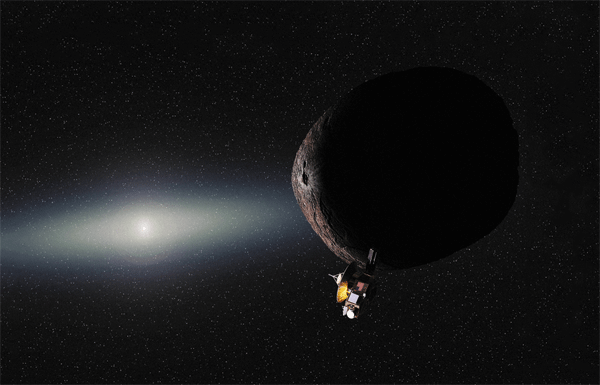
7 Easy Things to See on the “Supermoon”
Seven easy and rewarding targets to explore when the Moon is full.

Meet Alnilam, Orion’s Belt Buckle
Alnilam, the middle star of Orion's distinctive belt, is a distant supergiant that will (eventually) end its life in a supernova.

Meet Castor, Six Stars in One
Castor, a prime ornament of the Gemini constellation and one of the brightest stars in the sky, is actually a system of stars with six unique members.

Meet Kochab, a Guardian of the Pole
Meet the stars: Kochab is no record-breaking bright star, but it's easy enough to find — and it may have played an important role through history.

Meet Aldebaran, the Bull’s Eye
Learn more about Aldebaran, the red-orange giant star that "follows" the Pleiades across the sky.

Meet Capella, the Goat Star
Capella is the sixth-brightest star in the sky — and it's more than one star! The main two stars in the system are near-twins, bright yellow giants.

Meet Arcturus: Guardian of the Bear
Arcturus is one of the brightest stars in the sky — a cool red giant in Bootes, the Herdsman, that's often tied mythologically to Ursa Major, the Bear.

Meet Antares: The Star That Is Not Mars
Antares is a red supergiant that — like Betelgeuse — will one day go supernova.

See the Phases of Venus
If you have a set of binoculars or a telescope, watch for Venus’s thinning crescent over the next couple weeks.

Explore Solar System Worlds with NASA’s Image Archives
Have some time on your hands? Explore NASA's rich image archive and discover the solar system as you've never seen it before.

Meet Dubhe, Giant of the Big Dipper
Of the seven stars in the Big Dipper, Dubhe is an outlier. Its color, speed across the sky, and evolutionary age set it apart from its comrades.

Meet the Pleiades, the Seven Sisters
The Pleiades are actually a star cluster of thousands of stars enshrouded in dust and gas, and they're easy to find if you know where to look.

What are Asteroids, Comets & Meteors?
Asteroids, comets, meteors — what’s the difference? Is a comet just an asteroid with a tail? And what makes a meteor different from the other two?

Meet Altair, the Eagle’s Eye
Altair, centerpiece of Aqulia, the Eagle, is the twelfth-brightest star in the night sky and one of the closest stars to Earth.

Meet Barnard’s Star, Our Red Dwarf Neighbor
This faint red dwarf star is famous not because it's bright but because it's fast-moving — you can actually see it moving across the sky if you track it over several years.

Meet Canopus, the Second Brightest Star
The second-brightest star after Sirius, Canopus is visible in southern skies, shining out of the constellation Carina.

Meet Spica, the Ear of Grain
Meet Spica, the "ear of grain" in the constellation Virgo. This bright star is actually part of a binary orbiting so closely, they tug each other out of spherical shapes and whirl around each other every four days.

Meet Vega, the Jewel of the Lyre
Meet Vega, the fifth-brightest star in the night sky and the most brilliant star in the constellation Lyra. Vega is in the prime of its life on the main sequence, but it's notable for its speedy spin and infrared-radiating debris disk.

How to “See” Interstellar Space Probes
So far, humans have sent five probes into space that are or will go far beyond the solar system: the Pioneers, the Voyagers, and New Horizons. As an exercise in fun, here's how you can find those probes' locations on the sky.

Meet Fomalhaut, the Autumn Star
The bright star Fomalhaut, home to three suns plus a planet, peeks over the southern horizon in early autumn evenings in the Northern Hemisphere.
